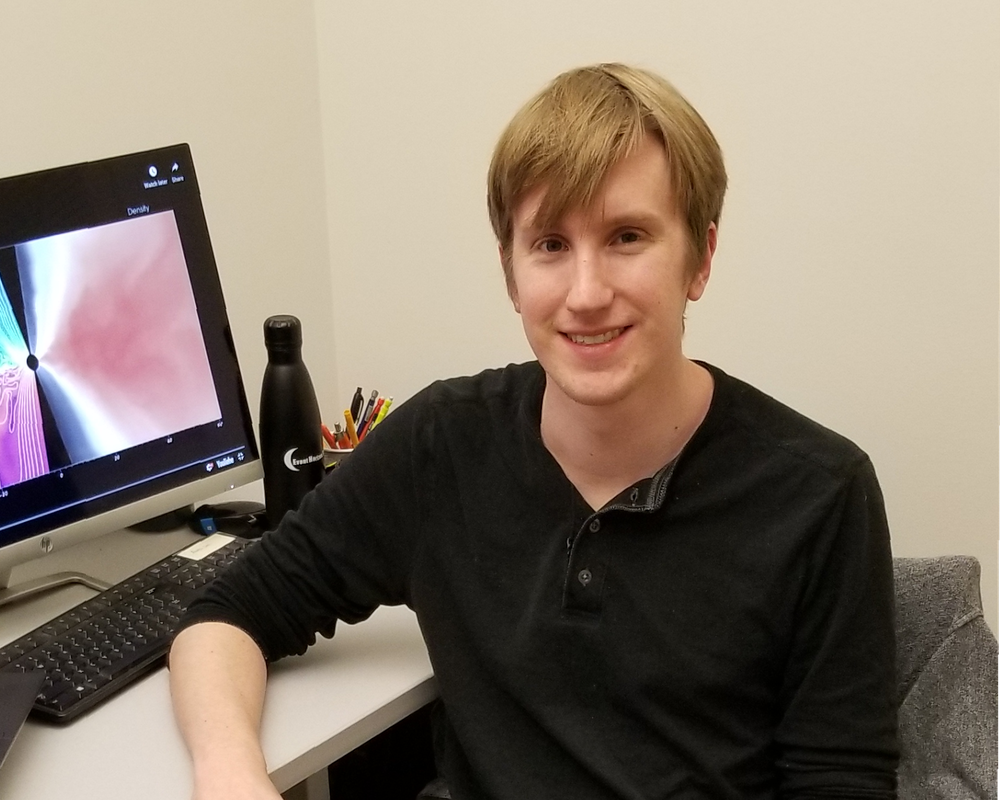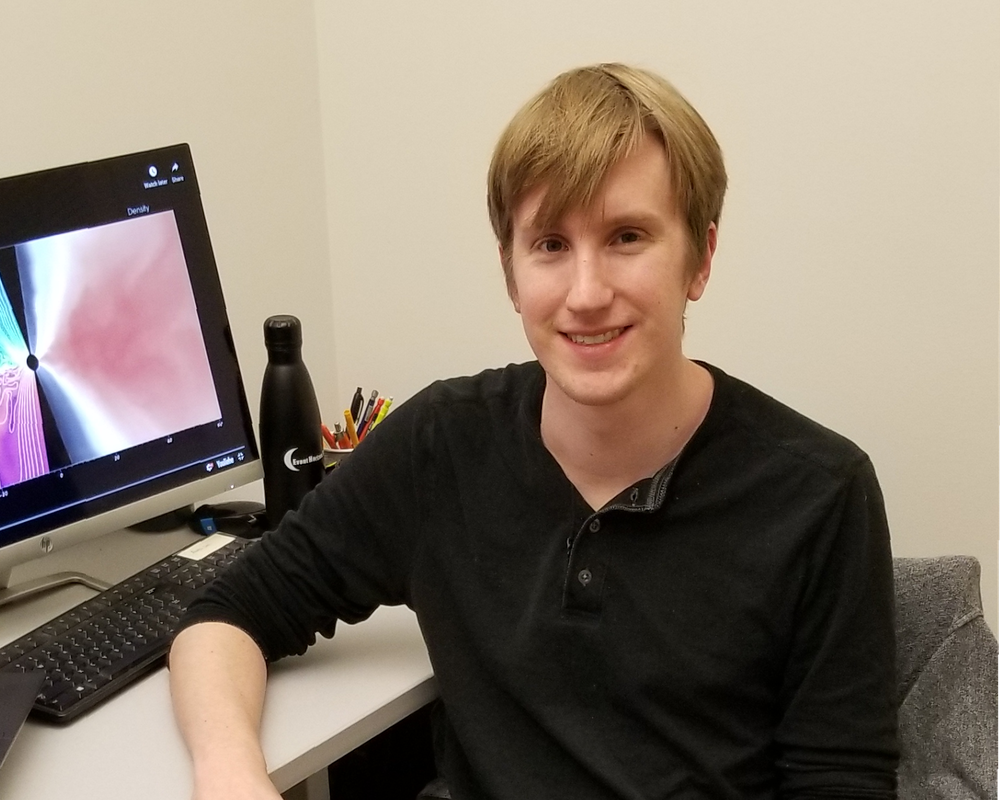High Expectations for Black Hole Simulations
The son of two geophycisists, Andrew Chael decided as a child that he wanted a nonscientific career. But he was pulled toward the sciences anyway by his fondness for identifying constellations and stars in the dark skies around Albuquerque, New Mexico, where he grew up.
As a physics undergraduate, Chael became interested in black holes. In 2014, he went on to graduate school to study the extreme environments around these dark objects, helping develop techniques that could translate Event Horizon Telescope (EHT) data into an image. One of his advisors and the founding director of the EHT, Shep Doeleman, told Chael that by the time he graduated, those images would be a reality. “I didn’t believe him,” Chael says. But sure enough, in April 2019—the same month that Chael submitted his Ph.D. thesis—the EHT team published the first image of a black hole.
Today, Chael is a research fellow at Princeton University and uses supercomputer simulations to study plasma flows around black holes. He also develops approaches for testing predictions of general relativity and of black hole dynamics with future images from next generations of the EHT (see News feature: Black Hole Imaging Tests Einstein’s Limits). Physics caught up with Chael to learn more about his work, about when we will have a black hole movie, and about why he thinks that combining physics with astronomy is important for advancing understanding of black holes.
All interviews are edited for brevity and clarity.
How did you feel when you saw that first black hole image in 2019?
I was super excited! It was amazing to see that the techniques that I helped to design and test on synthetic data worked on real data.
What are you currently working on?
I want to understand how black holes lose energy. Radio-telescope images of the black hole in the galaxy M87—the black hole imaged by the EHT—show that it is emitting a jet of plasma that extends 4900 light years into space. I want to better understand how energy gets transferred from the black hole to the jet by answering questions such as: How do we take the images of M87 and connect the jet to the immediate black hole environment? Can we put onto firmer footing the idea that energy driving the jet comes from the black hole? It would be great to have a direct way of seeing the jet emergence in action. That’s where the next-generation EHT comes in.
How so?
It should have increased sensitivity to much dimmer black hole structures, such that we should be able to see features that are 10 times fainter. The next-generation EHT could also be used to make black hole movies.
How would the advanced telescope work?
The EHT is a virtual telescope that effectively acts as an Earth-sized dish. It is currently made up of eight radio observatories across four continents. Each observatory simultaneously records the signal emitted by a target source—say M87—and those signals are then cross correlated to create an image. We borrow observing time from each observatory once a year.
For the next-generation EHT, we plan to add more observatories, particularly in places where we don’t yet have any. That will decrease the separation of the array’s observatories, improving the telescope’s resolution. The new antenna will also capture light at not one but two wavelengths, dramatically increasing both the amount of data collected and its dynamic range. With the next generation EHT, scientists should be able to make multiple observations a month, rather than one a year, allowing us to create movies.
How far is the next-generation EHT from being realized?
We have a grant to perform conceptual studies for the next-generation EHT, which involve simulating the data we hope to collect and the images we hope to produce from it. Hopefully, we’ll have the telescope up and running by the end of the decade.
What specific black hole features does the EHT image, and what might the next-generation EHT be able to see?
The 2019 image shows a blurred version of the photon ring—the region where photons orbit the black hole—and the rough outline of the black hole’s “shadow”—the central dark area. We think that the next-generation EHT should be able to image those features in much more detail. For example, predictions indicate that the light ring around a black hole is not a single ring but is actually made up of a series of nested subrings. We hope the next-generation EHT will have the resolution power to resolve those subrings.
What’s the significance of having a series of subrings rather than one?
The size and shapes of these subrings are a unique prediction of the general theory of relativity. By measuring them we will be able to precisely test predictions of that theory close to the event horizon. In addition to the rings, I recently showed that Einstein’s theory can also be tested by measuring the shape of the darkest region of the image—the “inner shadow,” which marks the boundary where the accretion disk hits the event horizon.
Do you have any advice for physics students who want to work on black holes?
You can go into a career in black holes by studying either fundamental physics or astronomy. But learning as much as you can from both angles is helpful. In fact, I think that combining the two subjects, for example, by using astronomical observations to say something about fundamental physics, is how the field will make the most progress. I really enjoy interdisciplinary conversations.
–Rachel Berkowitz
Rachel Berkowitz is a Corresponding Editor for Physics Magazine based in Vancouver, Canada.





